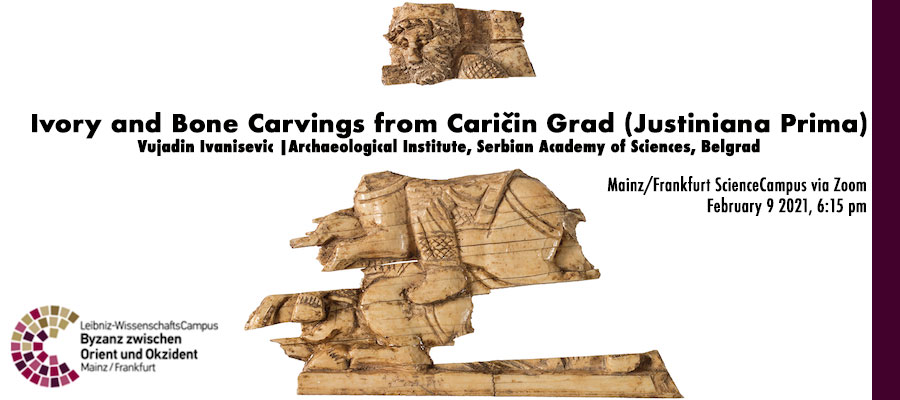Ivory and Bone Carvings from Caričin Grad (Justiniana Prima), lecture by Vujadin Ivanisevic (Archaeological Institute, Serbian Academy of Sciences, Belgrad), Mainz/Frankfurt ScienceCampus via Zoom, February 9, 2021, 6:15 pm
Decades of excavations at Caričin Grad have uncovered, in addition to fortifications, numerous churches and buildings, many findings, which evoke the prosperity of an Early Byzantine city in the center of Illyricum. The developed urban planning of the city, dominated by the Acropolis with the episcopal complex, the fortifications of the Upper city, the Lower city and the spacious suburbs including the surrounding forts, as well as numerous basilicae and other public buildings, argues that Caričin Grad can be identified with Justiniana Prima. Rare sources support this interpretation. Some important archaeological finds, such as the seals of Emperors Justinian I, Justin II and Maurice, as well as those of Archbishop John and other ecclesiastical dignitaries, indicate that it was an important center. Individual finds of valuable ivory objects should certainly be taken into consideration. Of note are those discovered during the earlier excavations, such as the fragment of a right hand, in ivory, performing a blessing gesture and a sliding lid that fitted a box depicting the scene of Christ's miracle - healing the bleeding woman.
Excavations of the sector on the northern slope of the Upper City at the foot of the Acropolis in 2012 revealed many new fragments of carved ivories, among which many fragments with figurative representations certainly stand out. This is an important discovery, especially considering that some fragments can be associated to the representation of the emperor and that they were most probably part of significant compositions, among which we must certainly highlight the representation of war scenes, iconographic representation quite rare among the surviving relics of the 6th century. The fragments could come from different items, which will be discussed, as well as the possibility of a “workshop”. This hypothesis is supported by the discovery of a piece of raw ivory with trace of drilling, which was uncovered in 2001 during the excavation of the intramural housing in the Lower city. Carved bone objects and workshops will also be considered.
Advance registration required.
